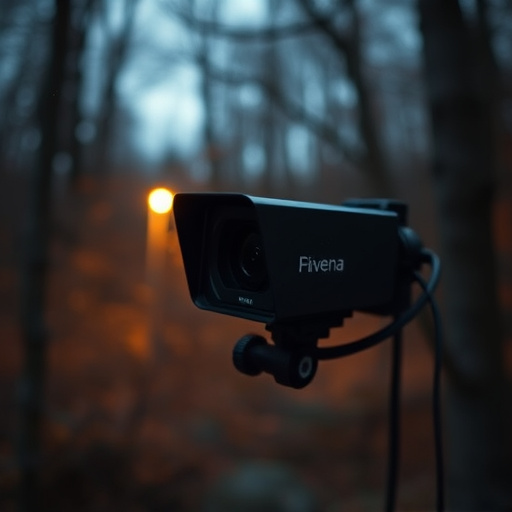Invisible IR cameras offer advanced home monitoring with their discreet, powerful technology that uses infrared light to capture heat signatures, ideal for low-light and undetectable to the naked eye. Strategic placement near entry points and common areas ensures 24/7 surveillance without raising suspicion, but navigates legal and ethical challenges regarding privacy rights and public trust, requiring professionals to adhere to strict guidelines and obtain consent.
Uncover the power of invisible IR camera technology for home monitoring with this comprehensive professional placement guide. Learn how these discreet devices, often referred to as covert monitoring systems, offer unparalleled security solutions. From understanding the mechanics of infrared imaging to mastering strategic system placement for optimal performance, this guide equips you with insights for effective implementation. Additionally, explore crucial legal and ethical considerations to ensure responsible usage in the privacy-conscious landscape of home security.
- Understanding Invisible IR Camera Technology for Home Monitoring
- Professional Placement Strategies for Optimal Covert Monitoring System Effectiveness
- Legal and Ethical Considerations in Implementing a Covert Monitoring System
Understanding Invisible IR Camera Technology for Home Monitoring
In the realm of home monitoring, Invisible IR Cameras have emerged as a discrete yet powerful tool. This cutting-edge technology utilizes infrared (IR) light to capture and transmit images, making it virtually invisible to the naked eye—perfect for discreetly keeping an eye on sensitive areas. Unlike conventional cameras that rely on visible light, IR cameras detect heat signatures, allowing them to operate effectively in low-light conditions or complete darkness.
The invisibility of IR cameras is a game-changer for professional security installations. They can be strategically placed within homes, businesses, or any environment requiring constant surveillance without raising suspicion. These cameras capture high-resolution images and videos, providing clear evidence for security purposes. With their advanced capabilities, Invisible IR Cameras offer an unparalleled level of discretion and efficiency for home monitoring systems.
Professional Placement Strategies for Optimal Covert Monitoring System Effectiveness
When implementing a covert monitoring system, strategic professional placement is key to maximizing its effectiveness. Discreetly positioning devices like invisible IR cameras in hidden locations allows for unobtrusive observation while maintaining optimal coverage. For instance, placing them near entry points, corridors, and common areas ensures round-the-clock surveillance without raising suspicion.
Leveraging the right technology and utilizing professional expertise for placement can enhance the system’s capabilities. Invisible IR cameras, known for their stealth and high-quality imagery, should be installed by professionals who understand building layouts and security protocols. This ensures devices are placed in locations that offer clear lines of sight, avoiding obstructions and maximizing the monitoring system’s overall performance and reliability.
Legal and Ethical Considerations in Implementing a Covert Monitoring System
When implementing a covert monitoring system, particularly using advanced technologies like invisible IR cameras for home monitoring, it’s crucial to navigate a complex landscape of legal and ethical considerations. In many jurisdictions, the use of surveillance equipment is strictly regulated to protect individual privacy rights guaranteed by law. Un autorizada installation or operation of such systems can lead to serious legal repercussions, including fines and imprisonment.
Ethically, covert monitoring raises concerns about the balance between security and privacy. While it may offer valuable insights for home protection, the hidden nature of these devices can foster a sense of distrust and invade personal spaces. It’s essential for professionals installing or managing such systems to adhere to strict ethical guidelines, obtain necessary consent, and ensure transparency in their operations to maintain public trust and avoid potential legal pitfalls.
The integration of invisible IR camera technology into home monitoring systems offers enhanced security and peace of mind. By employing professional placement strategies, as outlined in this guide, you can maximize the effectiveness of covert monitoring. However, it’s crucial to navigate legal and ethical considerations carefully to ensure responsible implementation. Remember, while these systems provide valuable insights, privacy remains a paramount concern, necessitating mindful deployment.
